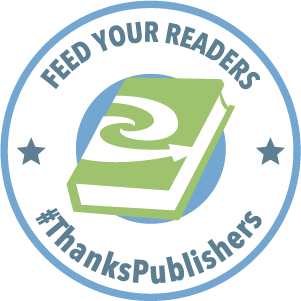Based on her sought-after sexuality workshops, the coauthor of Lesbian Sex Secrets for Men shows women how to master the 9 elements of sexual empowerment to reclaim their desire and live the sexually fulfilling lives they want.
The prevalence of low sexual desire ranges from 26.7% among premenopausal women to 52.4% among naturally menopausal women. That is an enormous segment of women who are frustrated about their lack of desire and wonder what’s wrong. But in Woman on Fire, Amy Jo Goddard shows us that the more whole we are as sexual beings, the more fulfilled we are as human beings. In this accessible, prescriptive book, Amy Jo reveals her holistic, inside-out approach to developing Sexual Empowerment. Women from 20 to 70 come to her workshops with issues like these: “What am I missing?” “I don’t like sex the way everyone else seems to.” “How do I maintain desire after having kids?” “How do I build sexual confidence?”
In answer, Amy Jo shows us how to master the 9 Elements of a Sexually Empowered Life and includes stories from the thousands of women she has worked with. She shows us how to get (back) in touch with desire, explore vulnerability and play, and push the boundaries of what we think is acceptable. We will not just have better sex, we will have more pleasure throughout life and more intimate relationships, whether we have many partners or one.
Thanks to Roshe Anderson at Penguin Random House for gifting me this review copy!
Amy Jo Goddard is a world reknowned sexual empowerment coach. She has done many things to promote sexuality, feminism, and couple’s communication. With those credentials under her belt, I expected a whole lot from this book –and I wasn’t disappointed!
I started highlighting stuff about 20 pages in. Goddard’s vision is refreshing in that, if society would stop sending women sex-negative messages, they would be able to enjoy themselves more. Women are shamed and made to feel guilty on a regular basis. Mothers tell their daughters to be protective of their body and not be a tease. Girlfriends talk about each other behind their backs, using terms like “slut” and whore”, when peer pressure is at its most effective. Men use their strength against women and hurt their psyche with rape or other types of abuse. Goddard’s message is to let go of your “story”, the tale you may tell yourself and live your life around it (I am a victim, I am a slut, I am someone who has strange sexual tastes) and embrace who you really are. People identify so strongly with their own stories that it can keep them from moving forward.
Goddard says that some of your story, while relevant in the past, may be outdated now. Perhaps you are divorced; perhaps you feel attracted to women now instead of men; perhaps there are things going on in your life that has changed you in other ways. No matter what is happening, it’s time for you to find your voice and speak up for yourself. There is no need for any woman to feel powerless in her life. There is no reason for any woman to hold onto beliefs that don’t serve you (sex before marriage is bad, good girls don’t have that type of fantasy).
In WOMAN ON FIRE, the author outlines 9 elements that are essential to sexual empowerment. She also includes an online portal with exercises and resources that will help the reader get the most out of her book.
As I read each chapter, I could feel myself figuratively “catching on fire” and wanting to become the woman that Goddard says is inside all of us.
I was especially moved by the chapter on emotion and showing up emotionally powerful. Goddard says there is a cause and effect for everything, and that YOU are the cause and your life circumstances are the effects. It makes perfect sense to me—and somehow no other book has every conveyed that in such a clarifying way before.
The writing is supportive, empowering, powerful and bold. This is not a burn-your-bra missive; this is a search-within-yourself journey that just happens to have sex at its core. Women that have contented sex lives will benefit from reading this as well, because Goddard forces you to think about things in a new way.
Her theory is acceptance: of yourself, of your needs, of your desires, of your body. Element 4 is all about your body and the media lies that force unobtainable standards upon women. There is also a section that illustrates the sex organs and explains their function.
Goddard is frank about her past abuse and how she freed herself of her own story, lest there be some women who discredit her theories as being too glib for comfort. Healing from past shame/abuse/loss of power is not easily gained, yet the author is open about her situation and the ways she learned to let go and regain self esteem again. To me, this makes her words more real and more empowering.
Women must learn to be whoever THEY want to be, not trying to live up to someone else’s idea. True, the major portion of this book urges you to awaken your erotic core, but it is also helpful for anyone wanting to gain more self love, confidence, and mindfulness. Here’s an example of how much Goddard wants women to make themselves the best they can be: her confidence quiz. Her website is full of information and encouragement for women of all ages.
Today’s world is full of self help books and buzzwords to make women feel empowered–WOMAN ON FIRE is a book that delivers and supports this attitude with real stories, real scenarios, and authentic support. Kudos to Amy Jo for telling it like it is, free of shame or embarrassment. I hope this book takes the world by storm.
Get your own copy [easyazon_link identifier=”1594633762″ locale=”US” nw=”y” tag=”gimmethatbook-20″]here[/easyazon_link].














Recent Comments